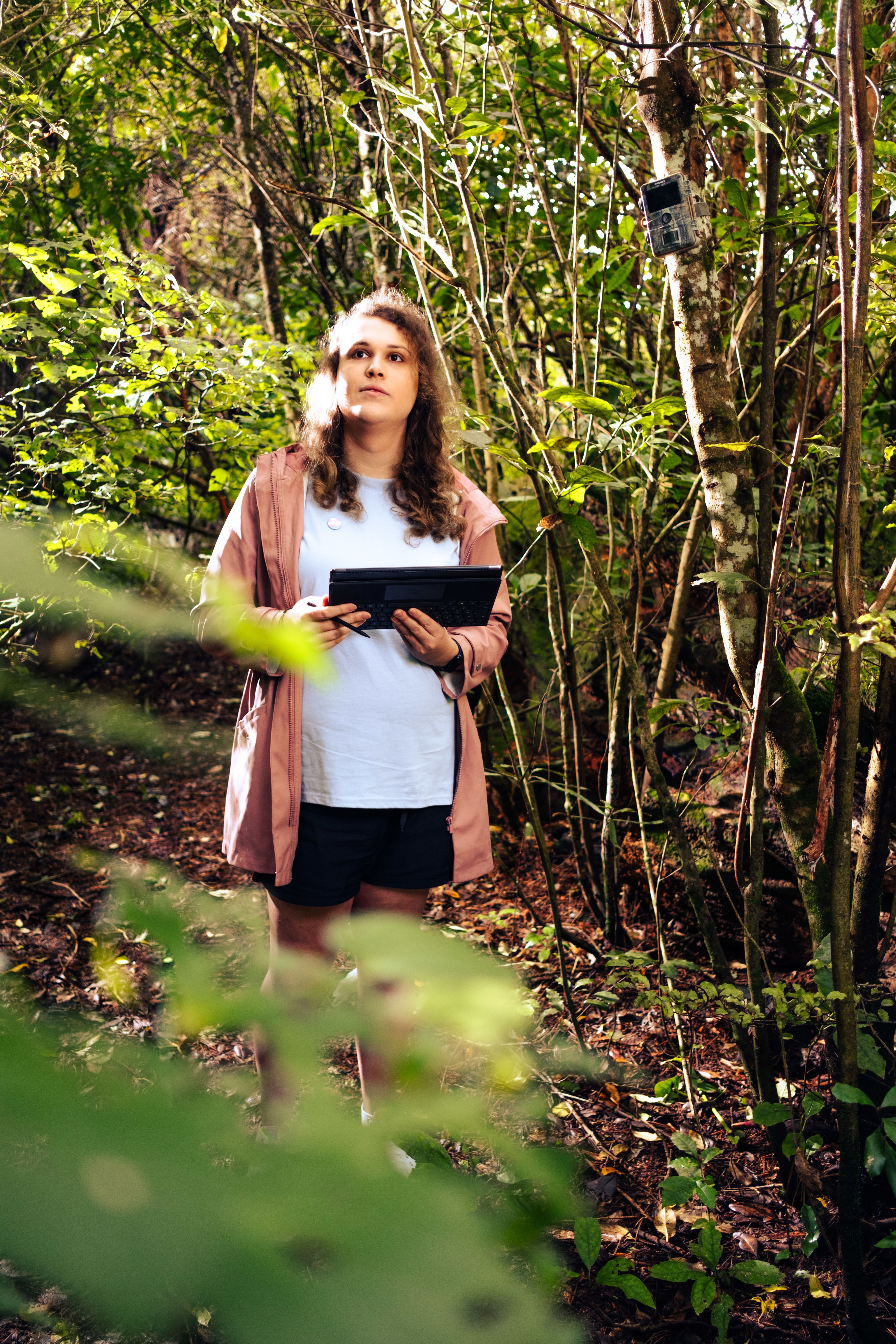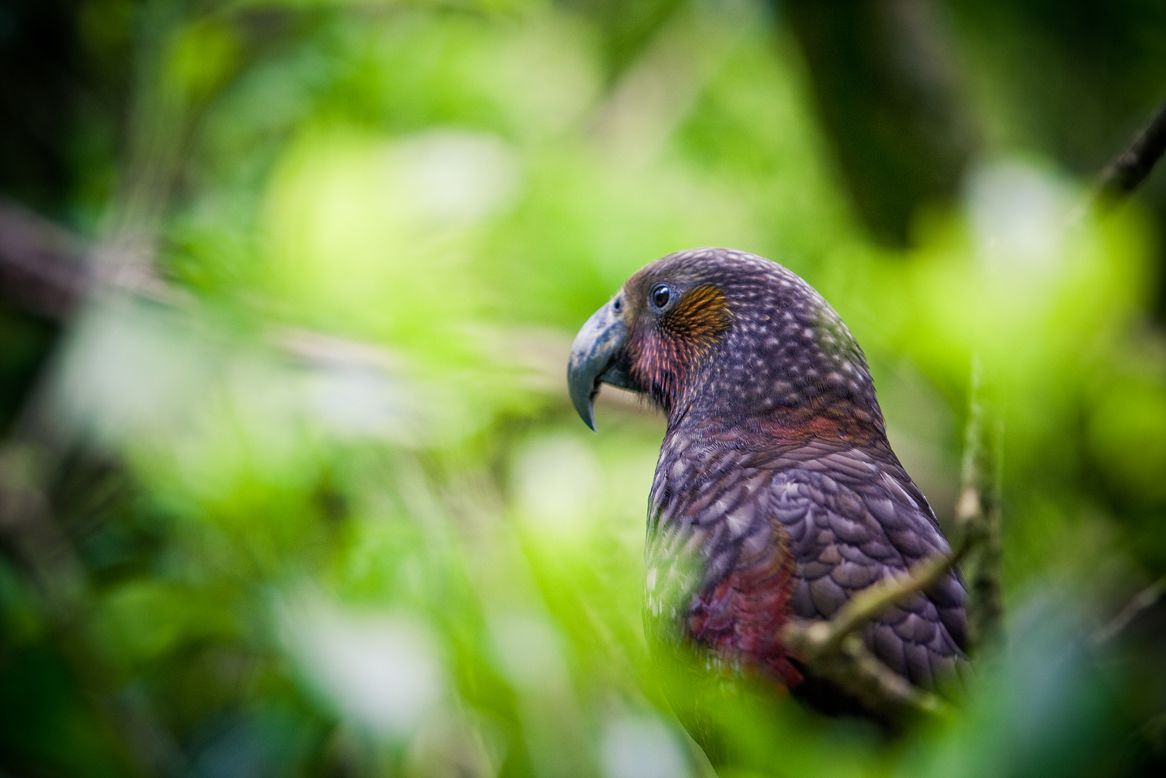AI-powered kākā conservation
Master of Science in Artificial Intelligence (MAI) student Abigail Clennell is developing cutting-edge technology to aid in the conservation of kākā.

Wellington is currently finding new and innovative ways to manage a good problem, too many kākā.
Abigail’s research focuses on creating a deep-learning AI model capable of identifying individual kākā. This approach aims to assist ecologists in tracking behaviour patterns and population growth of these birds in urban environments, particularly in Wellington.
“Traditionally, tagging the birds would give this kind of data, but there are now too many kākā in Wellington (which is an awesome problem to have) for this to be an effective method.”
The AI model allows users to determine if the same kākā is revisiting feeding sites where cameras are installed. This technology significantly reduces the time and resources required for manual tracking, which often involves banding birds and capturing clear images of the bands—a challenging task given the kākā’s active nature.
“The end goal is that any image taken of kākā could be fed into the AI to identify the bird, not just the images from the feeder. We have been incredibly successful in our conservation of kākā, helping them to thrive, and reintroducing them to the green belt. In theory, this research could be applied to other native birds in the future, allowing us to access even wider data about our precious populations.”
This research holds not only scientific and conservation value, but also cultural significance for Māori who regard kākā as taonga.
“In te ao Māori, kākā are taonga and are believed to be rangatira (chiefs) among ngā manu (birds).”
Abigail’s interest in AI stems from its interdisciplinary nature—combining aspects of mathematics, computer graphics, and computer science.
“In this fast-paced, changing world, AI has become an unavoidable hot topic, and I feel like it is necessary to embrace the direction and see how we can work with it. I really enjoy seeing how quickly the field is developing and how much it has changed and improved in such a short time.”
Looking to the future, Abigail envisions AI playing a crucial role in environmental sustainability. Potential applications include predicting natural disasters, assessing soil suitability for crops, and tracking animal behaviour trends. AI’s ability to support ecologists in data collection, sorting, and interpretation could significantly enhance conservation efforts.
The decision to pursue this research at Te Herenga Waka—Victoria University of Wellington, was influenced by the institution's leading position in AI studies in New Zealand. The University is the first in the country to offer an AI undergraduate major and a Master of AI programme.
Looking ahead, Abigail plans to pursue PhD studies, building on her current research. Her ultimate goal is to continue learning and developing—contributing to the field of AI and its applications in conservation.
“No matter what I do, I hope to always keep learning new things and developing myself.”
Abigail checking data captured from trail cameras.
Abigail checking data captured from trail cameras.
Native kākā bird at Zealandia Te Māra a Tāne. Photo courtesy of WellingtonNZ, photographer Jeff McEwan.
Native kākā bird at Zealandia Te Māra a Tāne. Photo courtesy of WellingtonNZ, photographer Jeff McEwan.
Abigail at Zealandia.
Abigail at Zealandia.








